Anime Where Only One Guy Can Ride in a Mech
Will we ever pilot giant robots?
(Image credit:
Battletech
)
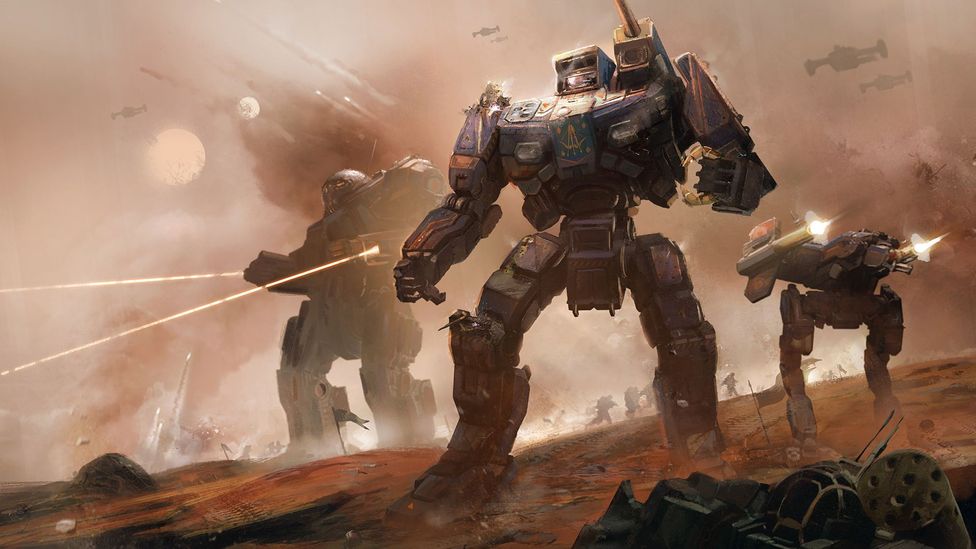
Ever fancied strapping yourself into a robotic suit to wage battle – or even lift heavy objects? Getting such a device off the drawing board might be a huge challenge.
F
For decades, there has been a common thread in what we think the battlegrounds of the future will look like; giant, man-carrying robot suits. These titanic behemoths – otherwise known as mechs - have become a kind of shorthand for the future of war. Human-piloted robots first appeared in Japanese anime, but soon migrated to the UK through the likes of the TV series Robotech. Hollywood films like Aliens, Avatar and Pacific Rim have imagined them as well.
But, how viable are these designs? Could we ever see human beings piloting a walking robot?
Jordan Weisman of Harebrained Schemes first created the mech-themed BattleTech games in the 1980s. Unlike previous examples of mechs, he took a relatively grounded approach when first conceiving his "BattleMechs". Jordan envisioned mechs built from a steel frame surrounded by electrically charged artificial muscles that would move the joints, together with a gyroscope stabiliser and on-board power plant.
The basic idea behind Jordan's mechs is reasonably sound. The artificial muscles he imagined are a lot like electroactive polymers. "These electrical bundles, which would expand or contract, based upon the electricity being provided to them, were the muscles of our mechs," says Weisman. "Fast forward 30 years, and that same material is now being used in the development of prosthetic limbs."
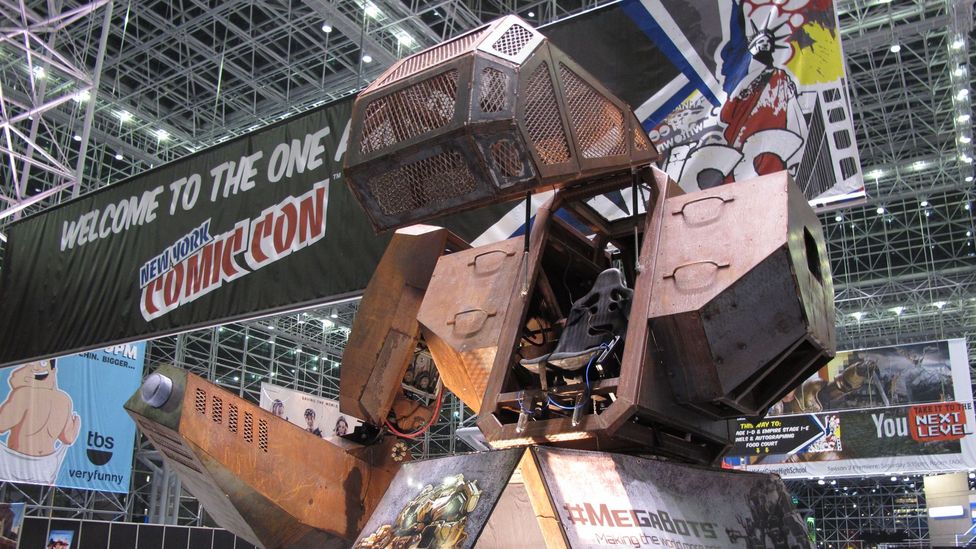
MegaBots mimic the human form, but travel on wheels rather than feet (Credit: Megabots/Flickr)
One of the reasons why the human form is so appealing as a vehicle is that it is a remarkably ergonomic design. "The human anatomy is incredibly efficient for clambering over rocks and walking along roads," explains Rob Buckingham, the director of Race (Remote Applications in Challenging Environments) at the Culham Science Centre. "Just look at a soldier who is able to carry several times his own body weight over any terrain." However, the trade-off is that walking on two legs requires significant dexterity, and stability can be quite hard to control.
Also, how do you control something at least 10-feet tall? Professor Sethu Vijayakumar of the Edinburgh Centre of Robotics suggests a combination of tele-operations, like those used on the "powerloader" in the film Aliens, with automatic systems reacting to the pilot's intentions. "There will be high-level intentions coming from the operator, but a lot of the low-level control will be built into the platform, such as maintaining stability when walking," says Sethu.
In fact, having a human-piloted bipedal mech is more likely than one that thinks for itself. "This is a very feasible type of technology," says Sethu. "More feasible than a fully autonomous system, because fully-autonomous systems have lots of problems in terms of sensing and contextual decision-making."
However, any kind of tele-operation control system would require a communications platform that is robust against hacks and drop-outs, and capable of operating at 500,000 times a second.
There is also the question of what would power the mech. Weisman envisioned the Battletech mechs being powered by a fusion reactor, but given that current fusion reactors are about the size of a warehouse, this is unlikely. Those in Pacific Rim used conventional nuclear (fission) reactors, which do provide a high power output, but there would be concerns over safety. "Technology in batteries and power density is lagging behind what is theoretically possible," says Sethu. "There is research into fuel cells, but that is in its infancy in terms of what it can do."
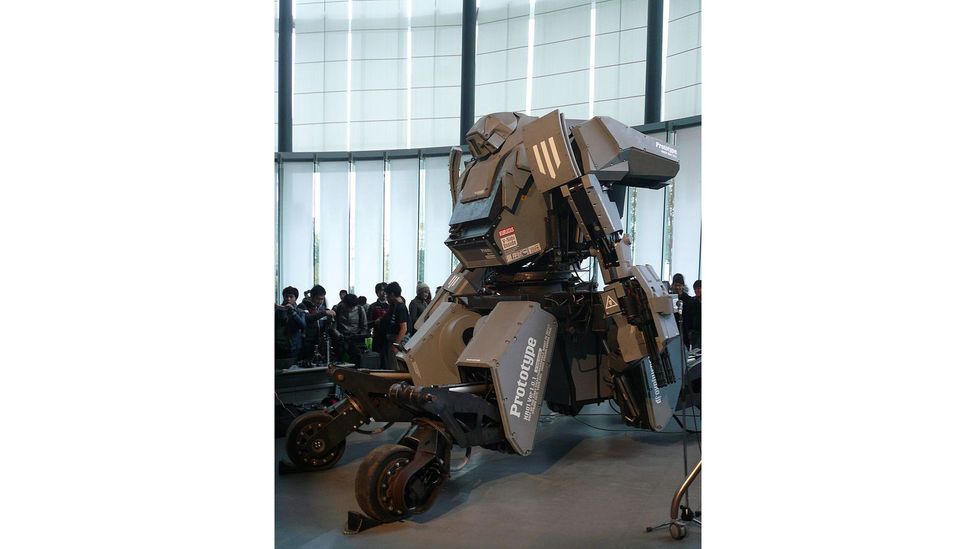
The wheels on the Kuratas robot solve some of the problems in trying to make create artificial legs (Credit: Pha Pha/Wikipedia CC BY-SA 2.0)
Providing the pilot with contextual information and situational awareness is another problem. "We have made progress with real-time control, such as for stability," says Professor Sethu. "The problem is we know how to do it, but when you have real-world sensors, any slight deviation in sensors throws the control system off."
Haptic feedback – the kind you get in gaming joysticks – is useful for determining whether you are touching something or not. However, providing the pilot with additional sensations, that add context to what the mech is experiencing, carries the risk of overloading the pilot with too much information.
Naturally, the bigger you build something, the heavier it becomes. The pressure exerted on a surface is force divided by the affected area. When you have a bipedal system, like you would on a mech, much of its mass is concentrated in the two legs. That creates the "stiletto effect", where all the weight is concentrated in a very small area. "When you take a woman and put all her weight on a quarter of an inch on the back of stiletto shoe, it will punch through a great deal of material," says Weisman.
This is a similar problem to one that the Germans encountered when developing the ultra-heavy Maus tank during World War Two. Weighing 188 tonnes, it operated well during the initial testing on reinforced concrete, but sank into the ground during its first field test.
Another issue would be making the mech walk. A gyroscope stabiliser already allows machines, such as cruise ships, to balance themselves. However, the act of walking is a pretty unstable process. People walk by tipping forward and catching themselves with a foot. And the taller you make something; the harder it becomes to balance.
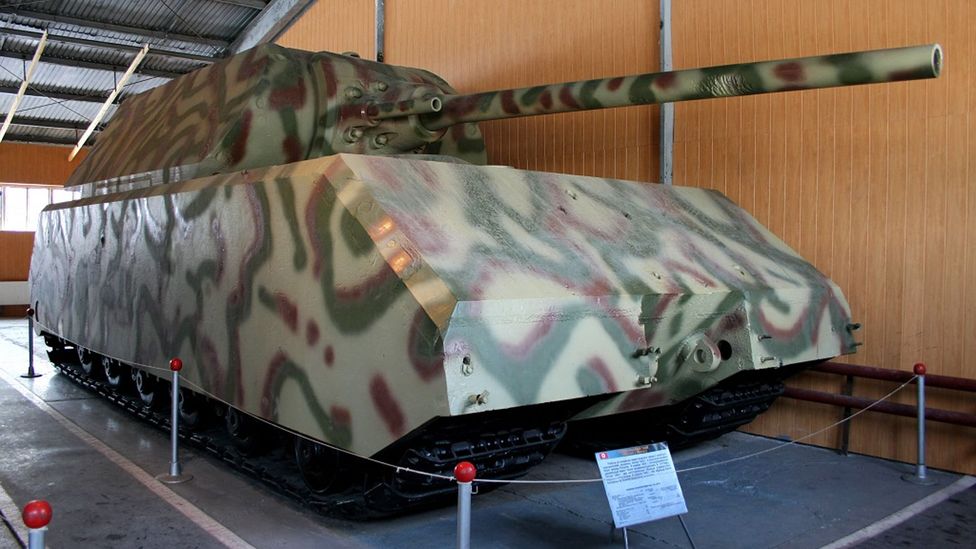
The German Maus tank had problems spreading its heavy load across its tracks (Credit: Superewer/Wikipedia)
Both 'Kuratas' developed by Suidobashi Heavy Industry, and 'Mark 2' developed by MegaBots, are claimed to be mechs. Although they both mimic the human form, they do not employ bipedal motion and instead rely on wheeled locomotion for traversing. One of the problems is that mimicking the human form – which has a good distributed system of load and energy – is a hard task from an engineering perspective.
Motors at each joint might be a way around it, but this solution would require heavy duty motors to support the rest of the body. These motors are comparatively heavy, which would mean there would be a significant amount weight focused at the joints, making the mech that much harder to balance.
There has been research into pneumatic muscles, but it would require two to open and close at every joint. "You can build something that has up to five joints using these pneumatic muscles," says Sethu. "But the moment you try to build a bipedal system out of that, it gets out of control in terms of the electronics, the routing and the wiring."
We already have the beginnings of mech production, with ActiveLink's prototype exoskeleton Assist Suit AWN-03. The assist suit is being developed as a solution to labour shortages that might arise due to an ageing population. Hoists and forklifts are not suitable for every situation. "There are some particular fields that cannot be mechanised, and industrial workers will still need to carry heavy objects by themselves," says Hiromichi Fujimoto, president of Activelink.
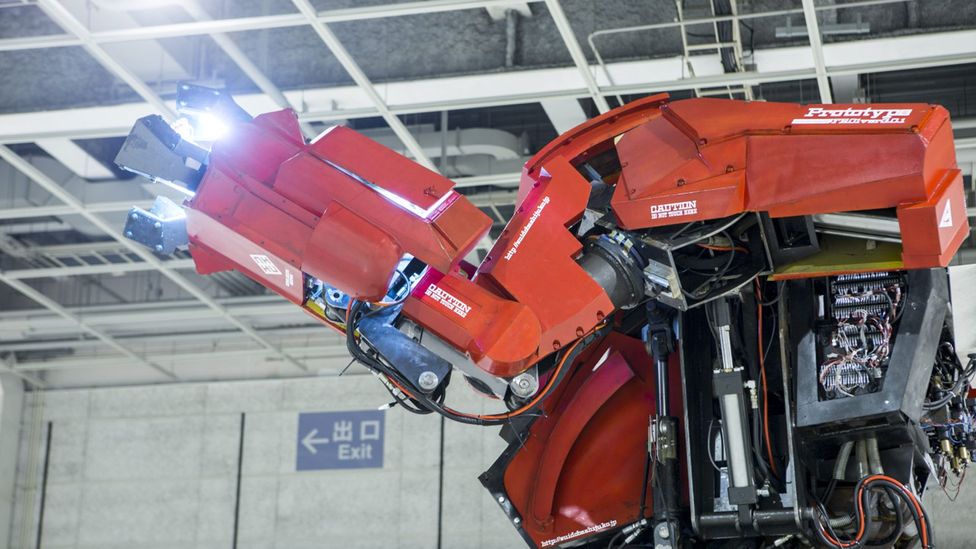
Walking mechs may a favourite of sci-fi authors, but they'll be hard to achieve in real life (Credit: Suidobashi Heavy Industries)
The next stage of the Assist Suit will be reducing weight and production costs, before looking at developing a model for heavier work. The new Assist Suit will be able to lift objects that a person could not otherwise lift by themselves.
One day, we may have human-piloted exoskeletons for moving cargo and, possibly, heavy construction. However, the towering mechs striding through futuristic cities will remain the stuff of blockbusters. "They are a fantastic fantasy, but as a practical military vehicle, the last thing you want to be is tall," says Weisman.
Others agree. "In some respects, we already have the technology," says Sethu. "We will get humanoid mechs, but only if we find an application. It is only science-fiction writers who care whether it has two legs and two arms."
Join 600,000+ Future fans by liking us on Facebook , or follow us on Twitter , Google+ , LinkedIn and Instagram
If you liked this story, sign up for the weekly bbc.com features newsletter , called " If You Only Read 6 Things This Week ". A handpicked selection of stories from BBC Future, Earth, Culture, Capital, Travel and Autos, delivered to your inbox every Friday.
Anime Where Only One Guy Can Ride in a Mech
Source: https://www.bbc.com/future/article/20160610-will-we-ever-pilot-giant-robots
0 Response to "Anime Where Only One Guy Can Ride in a Mech"
Mag-post ng isang Komento